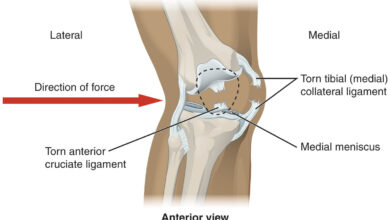4 Ways to Deal with Withdrawal Symptoms After Quitting Smoking

Quitting smoking isn’t an easy journey. Your mind and body need a long time to adjust to the lack of cigarette smoke or tobacco entering your body. This is why you may experience withdrawal symptoms, which makes quitting hard. These symptoms include irritability, anxiety, and getting upset. You might even experience difficulty sleeping, a general feeling of being uncomfortable, and strong urges to return to smoking. Cancer.gov reports that these withdrawal symptoms can last for several months after quitting.
It’s important to manage these symptoms to prevent smoking again, with a recent study showing that approximately 3 in 10 ex-smokers end up relapsing and reversing their progress. With that said, here are some ways to deal with withdrawal symptoms after quitting smoking.
Avoid smoking triggers
Your symptoms may worsen when you encounter smoking triggers scenarios that encourage your past habit. For instance, if you often smoked at a local bar, going to that place may trigger your desire to smoke. The same goes when you’re used to lighting a cigarette after meals.
For the first scenario, avoid visiting places where you used to smoke until you’re confident enough to control your cravings. If everyday activities trigger your cigarette cravings—such as the second scenario—try doing something else, like calling a friend or working on a creative project to keep your mind off smoking.
Keep your mouth busy
If avoiding triggers isn’t enough, you may cope better by keeping your mouth busy. After all, when you were smoking, you always had a cigarette between your lips. Keeping your mouth busy can trick your body into thinking it’s smoking, helping your symptoms subside.
Some of the things you can do are chew gum, eat snacks, or suck on hard candy. Always keep candies or snacks on your person in case you get cravings. Doing so reduces your need to smoke, allowing you to keep a constant no-smoking streak.
Use nicotine replacement products
Despite doing the above, you may still feel restless from the lack of nicotine. In this case, use nicotine replacement products, like pouches and inhalers.
A pouch is kept tucked under your lip for nicotine absorption and is more discreet compared to e-cigarettes and chewing nicotine gum. While nicotine pouches come in many flavors, ranging from coffee to citrus, one of the most popular flavors is menthol. The ZYN Wintergreen nicotine pouches you can buy online will give you an authentic and satisfying burst of wintery freshness while providing 6mg of nicotine. This helps reduce withdrawal symptoms while also avoiding the bad breath and teeth staining associated with cigarettes. Meanwhile, inhalers deliver nicotine to your body via the throat. Using this can replicate the feeling of inhaling smoke, enabling you to cope with physical withdrawal symptoms. The Nicotrol nicotine inhaler can be used five times per hour, so you can get enough “puffs” to make you feel like you’re smoking.
Try exercising to fight cravings
When the above methods aren’t enough, it’s time for a more laborious way to manage withdrawal symptoms: exercising. Our post “4 Tips for Weight Management After Quitting Smoking” mentions how moving your feet prevents weight gain but can also reduce your cravings by keeping you busy. This is especially helpful if you used to smoke when stressed, as exercising produces endorphins to elevate your mood.
Doing moderate-intensity exercises is the best for releasing endorphins. These include water aerobics, dancing, and brisk walking. You can also try learning a new sport, which will stimulate your brain and distract you from wanting to smoke. Moderate-intensity sports include tennis and swimming.
Smoking withdrawal symptoms can tempt you to relapse. Follow our tips to avoid doing so for a successful quitting journey.




